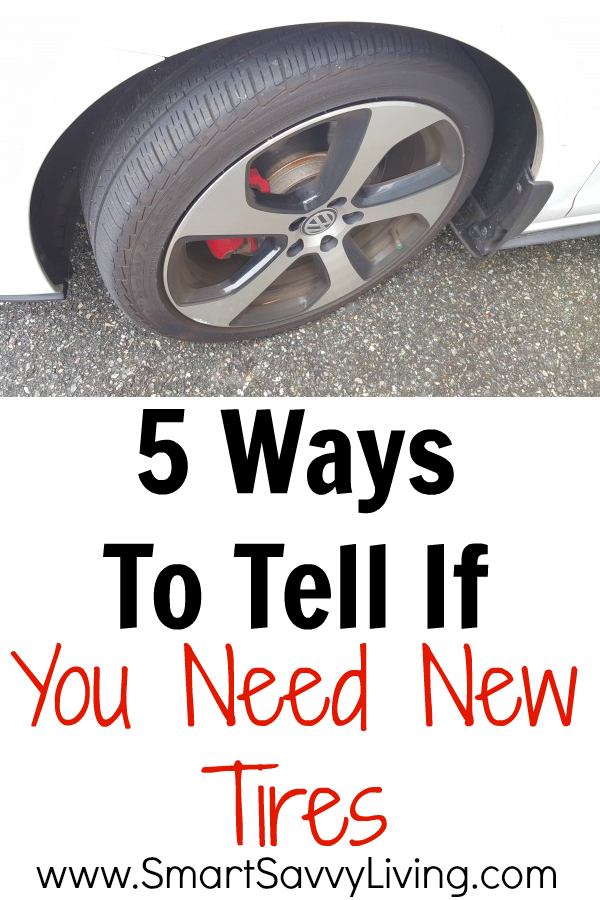Getty Images
Buying new tires can be a daunting experience. You face a bewildering array of brands, sizes and tire types to choose from, so it's easy to be confused. But don't worry: this guide will provide you with the essential facts you need to in order to make the right tire choice for your vehicle at the price you want to pay.
Before you buy, you'll need to know the answers to the following questions:
Already know about tires and just want our top picks? Our favorites in each category are listed below. Further down, you'll find more information about all-season, summer, and winter tires plus our top alternative picks in each category.
Is our top pick unavailable in the size you need? Looking for a fast, easy way to sort through the dozens of alternatives? Then go to Tire Rack's Tire Decision Guide. The company says it'll have a list of appropriate alternative choices for you in two minutes or less. The tirerack.com site is also deep with important consumer data, including tire warranties, treadwear guarantees, and tire-test results.
The vast majority of vehicles today come with all-season tires, which are designed to provide acceptable all-around capability throughout the year and in all weather conditions. That means a reasonable ride and respectable handling, quiet running, good wet-weather grip, and some capability in snow. Given their all-season designation, most car owners leave them on in winter and expect that their tires will deliver all the traction they need on snowy, icy roads. But most all-season tires are marginal in snow; dedicated winter tires, also known as snow tires, provide far better traction when the snow falls.
There are now two main sub-categories of all-season tires: high-performance all-seasons and grand touring all-seasons. High-performance all-season tires provide sharper handling than "standard" all-season tires. They grip the road more confidently and feel more sporty to drive—usually at the expense of some winter-weather traction. These tires are intended for sportier cars and more-aggressive drivers. Grand touring all-season tires have the lower-profile look of high-performance all-season tires but ride better at the price of some handling ability.
High-performance all-season tires provide sharper handling than "standard" all-season tires. They grip the road more confidently and feel more sporty to drive—usually at the expense of some winter-weather traction. These tires are intended for sportier cars and more-aggressive drivers. Grand touring all-season tires have the lower-profile look of high-performance all-season tires but ride better at the price of some handling ability.
Recently, a subset of grand touring all-season tires has emerged that we call “all-weather” tires. These tires feature snow traction that almost comparable to that of pure winter tires while offering similar performance in other areas as conventional all-season tires. They are designated by a snowflake-within-a-mountain symbol on the tire's sidewall.
Summer TiresThis term is a misnomer, as this type of tire should rightly be called "three-season" rubber. Summer tires are designed specifically to deliver dry- and wet-weather traction in moderate or warm weather.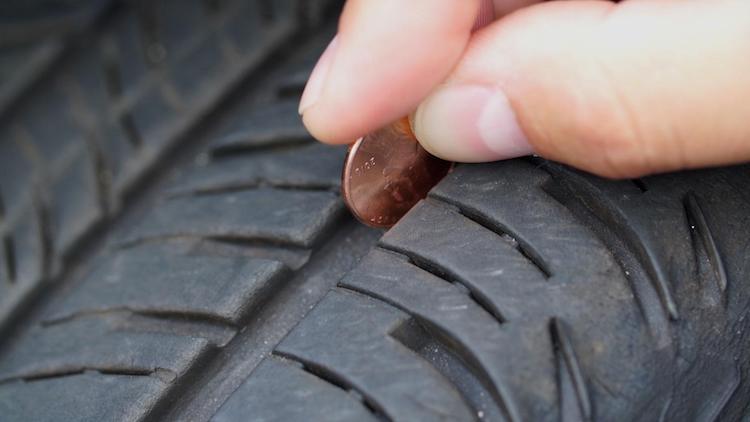 They sharpen steering response, increase cornering traction by an order of magnitude, and stop your vehicle in much less distance. But they do so at a cost: most summer tires only work well at temperatures of about 40 degrees Fahrenheit and above. As outside temps fall toward freezing, the tires can feel skittish and behave inconsistently; they lose a large portion of their grip to the point that they act like they are on a wet or even icy road. More than one driver of a powerful car, unaware of the temperature sensitivity of its summer tires, has lost control and crashed on a cold day.
They sharpen steering response, increase cornering traction by an order of magnitude, and stop your vehicle in much less distance. But they do so at a cost: most summer tires only work well at temperatures of about 40 degrees Fahrenheit and above. As outside temps fall toward freezing, the tires can feel skittish and behave inconsistently; they lose a large portion of their grip to the point that they act like they are on a wet or even icy road. More than one driver of a powerful car, unaware of the temperature sensitivity of its summer tires, has lost control and crashed on a cold day.
As with all-season tires, summer rubber comes in several varieties. Tire Rack divides these tires into three main groups by escalating capability: ultra-high performance on the bottom rung, followed max performance and extreme performance. Summer tires come on cars such as Porsches, Corvettes, Mercedes-AMGs, and Mustangs.
Winter TiresCalled "snow tires" in the past, winter tires are designed to provide maximum traction in snow and in slippery winter conditions—and the traction they provide in those situations is not matched by any other category of tire. Even an all-wheel-drive vehicle on all-season tires cannot match the stopping or turning capability of a similar two-wheel drive vehicle fitted with four winter tires, a point we have proven in our own winter-tire testing.
Even an all-wheel-drive vehicle on all-season tires cannot match the stopping or turning capability of a similar two-wheel drive vehicle fitted with four winter tires, a point we have proven in our own winter-tire testing.
Winter tires are designed to work well in the cold-weather months, but they don't handle or wear as well as all-season or summer tires once the weather warms up. They should be considered as a second set of tires for your vehicle if you live where snow flies annually. We fit all of our long-term test vehicles with winter tires and they've proven their worth many times over.
Why use winter tires? If you live in the northern states, we recommend purchasing a set of winter tires. Their deep treads are engineered to deliver a significant traction improvement, and do they ever work. You'll feel safer and be safer, not to mention more relaxed when driving in snow. Retailers such as Tire Rack will sell you a set of snows mounted on steel wheels that you can swap on when winter rolls around.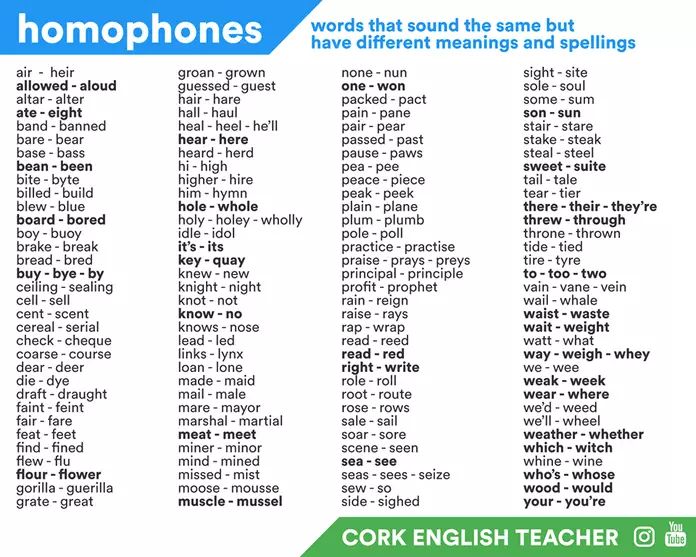 Here at Car and Driver, we swear by them.
Here at Car and Driver, we swear by them.
Tire Size and Other Factors
Most consumers choose to replace the worn tires on their vehicle with something equivalent in size and capability. This makes a lot of sense; your car was engineered to work well on the type and size of tires it came on, so fitting an identical or similar replacement set would maintain the performance and safety your vehicle was designed to deliver. (We'll get to upgrading later on).
To inform your decision process, you'll need to know your vehicle's tire size and speed rating, and you'll also want to consider how many miles you'll get out of any new tires you are considering (this is called tread wear). Much of that information is printed on the sidewalls of the tires that are on your car right now. It's also available in most owner's manuals, online, and at tire dealers. (We suggest cross-checking those sources to make sure you've got the right information.)
Here's how to read the most important data imprinted on your tires' sidewalls. (For an in-depth look at how to read all of the information on a tire sidewall, click here.)
(For an in-depth look at how to read all of the information on a tire sidewall, click here.)
KEY: 1) Tire width; 2) Aspect ratio; 3) Radial-tire designation; 4) diameter; 5) Load rating with speed rating; 6) Heaviest spot on tire; 7) Tread-wear rating; 8-9) Traction and temperature ratings; 10-11) Mud-and-snow or three-peak-mountain rating; 12) Vehicle-specific marking; 13) Tire-materials list and manufacturing information
Tire SizeIf you're going to replace your tires with something equivalent, you will need to know the proper size. The size of car and light truck tires is usually expressed in a short series of numbers and letters that read like this (as seen in the above illustration): 245/40-R18. The first number indicates the width of the tire at its widest point in millimeters. The number after the slash is what's called the aspect ratio, which indicates how tall the sidewall is as a percentage of the width.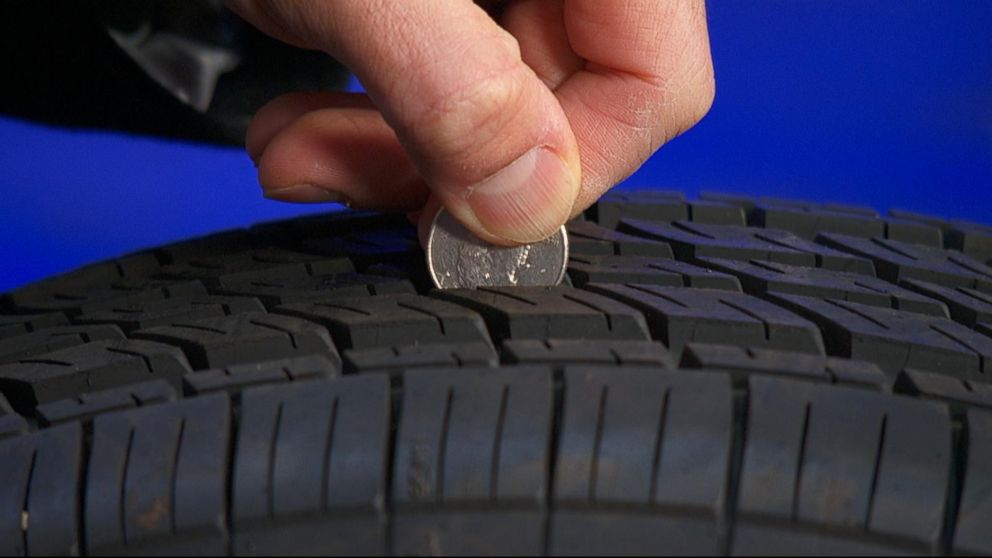 The higher the number, the taller the sidewall. The squat tires fitted to sports cars and muscle cars, called low-profile tires, have aspect ratios of 30–40. Family sedans and SUVs are in the 45-60 range or taller. The final number in the series is the diameter of the wheel in inches that the tire must mount to. The "R" indicates it's a radial tire, which virtually all of today's tires are.
The higher the number, the taller the sidewall. The squat tires fitted to sports cars and muscle cars, called low-profile tires, have aspect ratios of 30–40. Family sedans and SUVs are in the 45-60 range or taller. The final number in the series is the diameter of the wheel in inches that the tire must mount to. The "R" indicates it's a radial tire, which virtually all of today's tires are.
Tires also carry a speed rating, which indicates not only how fast they can safely go for an extended period of time, but also the overall performance potential of the tires. Tires for high-performance cars have a higher speed rating than those for mainstream family sedans and SUVs. The speed rating of the original tires that came on your car were matched to the maximum speed the car could attain—plus a significant built-in safety margin. This speed rating is expressed as a letter in the alpha-numeric code that immediately follows the tire size. Letters range from L to Y, and cover maximum speed ranges from 75 mph to more than 186 mph.
Letters range from L to Y, and cover maximum speed ranges from 75 mph to more than 186 mph.
The are two pieces of data that will help you estimate how many miles you can expect from a set of tires: the tread-wear rating and the tire mileage warranty. The tread wear rating is listed as a number on the tire sidewall after the word "treadwear". The higher this number, the more likely the tire will last longer. But the tests that are used to determine treadwear aren't precise, so there is a lot of variability in this number.
A better way to gauge potential tire life, and to compare the expected longevity of different tires you might be considering, is to look at the manufacturers' tread-life warranties. Many but not all tires carry a tread-life warranty in addition to manufacturing-quality/defect warranties. This information can be found online (like this example from tirerack.com), or in the tire maker's marketing materials. The industry's general rule is that about three-quarters of all drivers will find that their tires last at least last as long as the mileage listed in the tread life warranty. Generally, if your tires wear out before the guaranteed mileage bogey, you can get a credit for the percentage of miles you came up short, which you can then apply to the purchase of a new tire. (Tire dealers routinely handle this transaction.)
The industry's general rule is that about three-quarters of all drivers will find that their tires last at least last as long as the mileage listed in the tread life warranty. Generally, if your tires wear out before the guaranteed mileage bogey, you can get a credit for the percentage of miles you came up short, which you can then apply to the purchase of a new tire. (Tire dealers routinely handle this transaction.)
Numerous automakers fit their cars with run-flat tires from the factory. These tires are capable of driving for short distances at low speeds even after a puncture has left them without air, allowing you to reach home or a repair facility without needing to change a flat on the side of the road. If your vehicle came on run-flats you have the option of replacing them with conventional tires and carrying a spare (but beware that some cars fitted with run-flats actually do not have a trunk compartment for a spare). Or, you can replace your worn run-flats with another set of run-flats.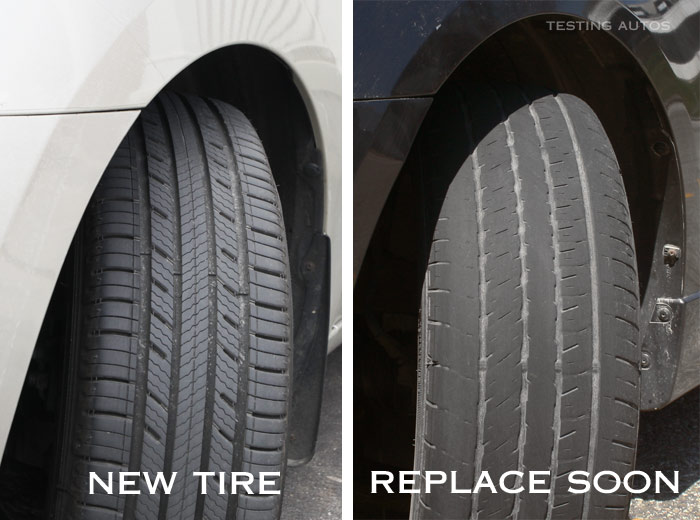 And now that tire-pressure monitoring systems are compulsory equipment in new cars, you could even fit run-flats on a car that didn’t originally come with them.
And now that tire-pressure monitoring systems are compulsory equipment in new cars, you could even fit run-flats on a car that didn’t originally come with them.
Run-flat tires do have downsides. Their stiff sidewalls, which are required to hold the tire up when deflated, tend to make the car ride noticeably harder over rough pavement, but tire tech is continually improving and run-flats aren’t nearly the penalty they were a decade ago. Choice is also more limited than with conventional tires and run-flats are premium-priced. In general, we'd recommend swapping to conventional tires and carrying a spare or mini-spare if possible.
There's one more decision you need to make: do you simply replace the tires on your vehicle with something equivalent, or upgrade?
If you're going to replace what came on the car with something equivalent, you're ready to go. Peruse the online resources like Tire Rack to compare tires, and then either buy from one of them or head to a local tire store. The advantage of buying online is that you can get the exact tires you want; different brick-and-mortar tire stores sell different brands of tires. The online retailers have relationships with the chain tire stores, which will mount the tires you bought on the internet on your wheels (for a small fee) even though you didn't buy them there. Tire Rack has a decision guide to help you find the tires that fit your car.
The advantage of buying online is that you can get the exact tires you want; different brick-and-mortar tire stores sell different brands of tires. The online retailers have relationships with the chain tire stores, which will mount the tires you bought on the internet on your wheels (for a small fee) even though you didn't buy them there. Tire Rack has a decision guide to help you find the tires that fit your car.
This is more complicated than simply replacing your tires, as you have several ways to go. You can choose a higher-performance tire of the same size on your current set of wheels by substituting, say, a high-performance all-season tire for a standard all-season—if you can find one that fits exactly. Or you can choose a set of wider, lower-profile summer or high-performance all-season tires, but this is trickier. You need to know if the tires will fit without rubbing on the suspension or body parts—a definite safety issue. Here, consulting one of the experts at Tire Rack is a must, as they have this information for many cars. You can also try checking an online forum for your make and model of car (if one exists).
Here, consulting one of the experts at Tire Rack is a must, as they have this information for many cars. You can also try checking an online forum for your make and model of car (if one exists).
Many vehicles can be had from the factory with several different tire sizes—Honda Civics, for example, come with tires ranging from 215/55-R16 to 245/30ZR-20—so going to a larger-diameter wheel might work. But know that fitting lower-profile rubber will almost always require a larger-diameter wheel. The outside diameter of your tires needs to remain constant; everything from your vehicle's suspension to its ground clearance to its gearing is affected by the overall size of the tires. As the sidewall gets slimmer, the wheel must grow to compensate. Use this size guide to see how switching to a lower-profile tire affects wheel diameter.
Wider, lower-profile higher-performance tires can also make the car ride rougher, wear faster, be noisier, and influence the steering, possibly causing you to have to make more steering corrections on the Interstate. Low-profile tires will also probably be more prone to damage from potholes, something we experienced with one of our long-term cars, which blew out a dozen of its low-profile tires in the course of 40,000 miles on our rutted Michigan roads. And they'll almost definitely be more expensive, plus you'll have to buy a new set of wheels. You'll need to consider all of these issues carefully before you make the leap.
Low-profile tires will also probably be more prone to damage from potholes, something we experienced with one of our long-term cars, which blew out a dozen of its low-profile tires in the course of 40,000 miles on our rutted Michigan roads. And they'll almost definitely be more expensive, plus you'll have to buy a new set of wheels. You'll need to consider all of these issues carefully before you make the leap.
For everything you need to know about buying and maintaining tires, click here.
We believe everyone should be able to make financial decisions with confidence. And while our site doesn’t feature every company or financial product available on the market, we’re proud that the guidance we offer, the information we provide and the tools we create are objective, independent, straightforward — and free.
So how do we make money? Our partners compensate us. This may influence which products we review and write about (and where those products appear on the site), but it in no way affects our recommendations or advice, which are grounded in thousands of hours of research. Our partners cannot pay us to guarantee favorable reviews of their products or services. Here is a list of our partners.
Our partners cannot pay us to guarantee favorable reviews of their products or services. Here is a list of our partners.
If you don't want to stick with the type of tires that came with your car, look for the right size and the characteristics you want — and get started early.
Many or all of the products featured here are from our partners who compensate us. This may influence which products we write about and where and how the product appears on a page. However, this does not influence our evaluations. Our opinions are our own. Here is a list of our partners and here's how we make money.
The road is covered in a sheet of snow when the truck in front of you jams on the brakes. You hit the brake pedal and feel the tires gripping, safely bringing you to a stop just short of the truck’s rear bumper.
If something like this has happened to you, then you probably took the time to choose the right tires for your car. Picking tires that can handle weather and road conditions you encounter is one of the most important decisions you can make.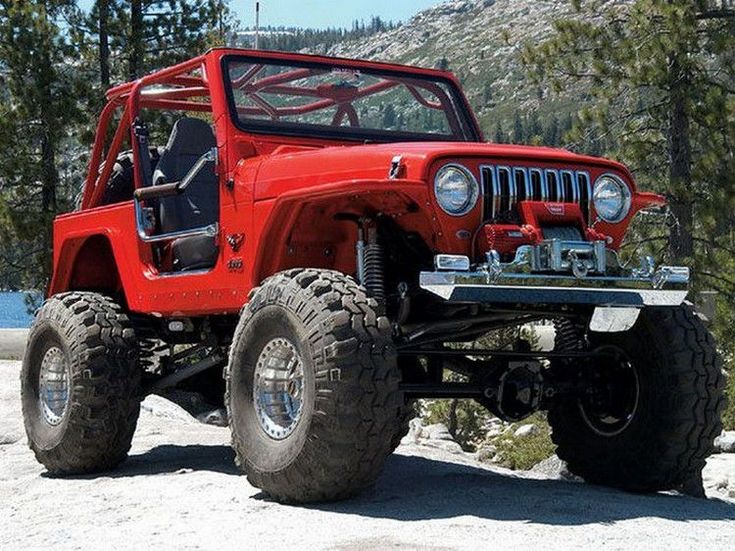 After all, your car’s tires are your only connection to the road.
After all, your car’s tires are your only connection to the road.
So when it’s time for new rubber, consider the following factors to ensure you choose the best tires for your car:
When it comes to purchasing tires, “a good place to start is to consider buying the same ones that came on the car,” says Dan Edmunds, director of vehicle testing for car site Edmunds.com.
If you like the way the car rides and handles, buy the original equipment, or OE, tires your car came with from the manufacturer.
This is the easiest option: Since the tires were designed for your car, you know they’ll be a good fit. You can find out which tires came with your car by looking in your car’s owners manual or doing a quick search on an online tire retailer’s website.
But if you want to change the ride characteristics of your car, you’ll need to do a bit more research. Edmunds says to read online tire reviews or refine your search for specific characteristics (more on that below).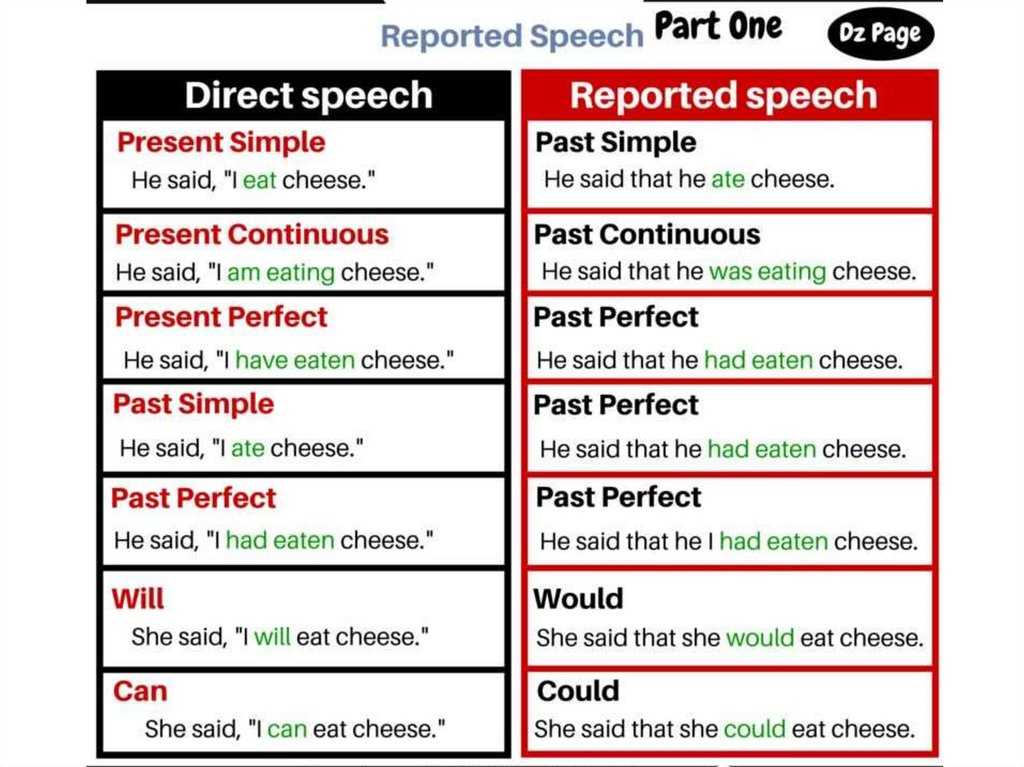
Locate a placard on the driver’s side door that indicates what size tires fit your car. For example, your tire size might read P215/65 R15. This string of numbers and letters denotes the tire width, the height compared to the width, and the diameter. In most cases, your new tires should match this size.
If you shop for tires online, you can easily find your tire size on a retailer’s website, such as TireRack.com. Just enter the year, make and model of your car and you’ll find the tire size and a list of tires that match the size and will work for your car. You can then compare tire reviews and prices.
“Tires define the personality of the vehicle,” says Gene Petersen, tire program manager for Consumer Reports, which tests and reviews tires. He tells drivers to choose tires that are not only the right size, but that also optimize the car’s handling and braking ability. Finally, search for tires that reduce road noise and provide a comfortable ride.
Finally, search for tires that reduce road noise and provide a comfortable ride.
However, keep in mind that there will only be a few brands of tires that are developed specifically for your car, Edmunds says.
“They are chosen to achieve the ride and quietness and handling that creates the personality [the manufacturer] wants that car to have,” Edmunds says.
You’ll also need to decide whether you want all-season, winter or summer tires. Here’s a description of the differences among those tire types:
All-season tires are the most popular because, as the name indicates, you can leave them on the car year-round. “All-season tires provide some modest grip and traction on ice and a good compromise of dry and wet grip,” Petersen says.
Winter tires are not designed for all-year use. This means that you’ll either have to buy an extra set of wheels or have an installer swap them with your summer tires as winter approaches. Winter tires are made of a pliable rubber compound that performs best in cold temperatures. They also have a deeper tread and more slits (called “sipes”) to break ice and bite into snow.
Winter tires are made of a pliable rubber compound that performs best in cold temperatures. They also have a deeper tread and more slits (called “sipes”) to break ice and bite into snow.
Summer tires are best suited to sports cars for performance driving and provide good grip on dry roads in warm temperatures and at high speeds. However, the soft rubber compound does not provide good traction below about 40 degrees or on snowy surfaces.
Don’t wait until your tires are dangerously worn before you begin shopping. Petersen suggests checking your current tires by inserting a quarter into the tread. If the top of George Washington’s head (pointing down) is even with the tread, it’s time to begin the shopping process. If you insert a penny and the tread is even with the top of Abraham Lincoln’s head, the tires are becoming unsafe and you should buy new ones right away.
If you get started early, you’ll have plenty of time to research tires and shop the best prices.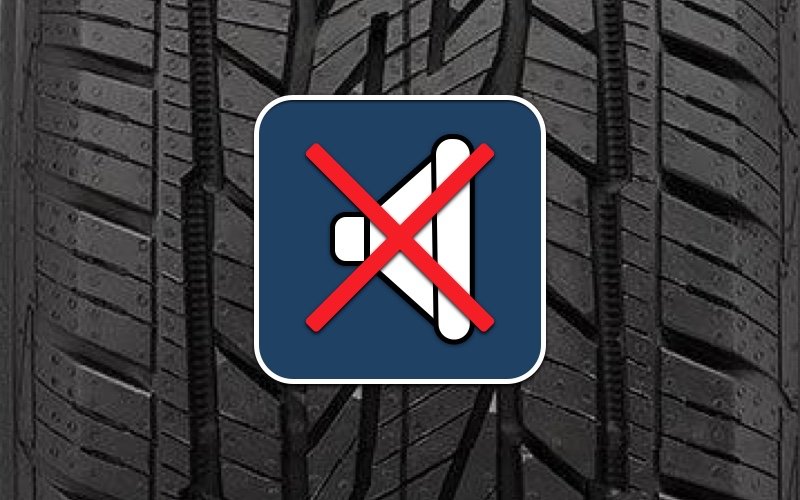 Once you know your tire size, and the type of tire and characteristics you want, you can read reviews and check out ratings from sites like Consumer Reports and SaferCar.gov.
Once you know your tire size, and the type of tire and characteristics you want, you can read reviews and check out ratings from sites like Consumer Reports and SaferCar.gov.
When you find and price the tires you want online, you may be able to get a brick-and-mortar tire shop to beat that price. If not, you can order the tires online, have them sent directly to a local installer and then bring your car in when they arrive.
So plan ahead — you’ll wind up with a smooth and safe ride, and you might even save some money.
About the author: Philip Reed is an automotive expert who writes a syndicated column for NerdWallet that has been carried by USA Today, Yahoo Finance and others. He is the author of 10 books. Read more
On a similar note...
Get more smart money moves – straight to your inbox
Sign up and we’ll send you Nerdy articles about the money topics that matter most to you along with other ways to help you get more from your money.
Season
SelectReset filter
extended selection
How to find out the correct tire size for your car?
29.06.2019
Author: Sergey Akhmetov
Views: 29321
If you don't know what size of tires should be on your car or are not sure that the size recommended by the manufacturer is currently installed on it, then you are at the right place.
Here is 7 ways to find out the correct tire size for your car:
1. View the size on the sidewall of the tire that is currently installed on the car
You can read how it looks and how to read the designations on tires correctly in our article “Tyre marking: basic parameters”. This method is suitable if you know that the car has factory tires or that the car is still under warranty. Otherwise, read on.
2. See the recommended tire sizes depending on the car model:
- on the inside of the glove compartment
- on the end of the driver's door
- on the side of the car
- on the inside of the gas tank hatch
3.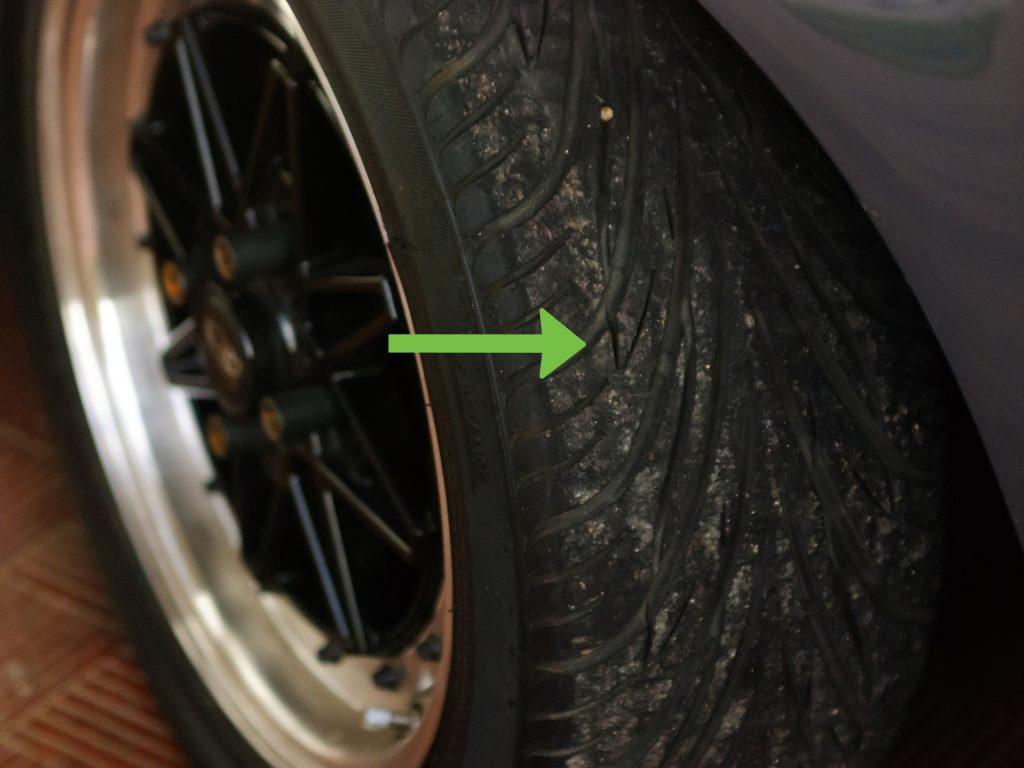 Look at the operating manual of your car
Look at the operating manual of your car
as as a rule, the relevant section (Chassis, Tires / Wheels, etc.) contains information on the permissible rubber sizes.
4. Look at the website of the car manufacturer or its dealer
This method may suit you if the car is still being produced and sold. In this situation, data on the sizes of tires and wheels, as a rule, is contained in the "Technical Specifications" or "Car Equipment" section.
5. Call the official service that serves your brand of car
other car. The same applies to absolutely new models on the market - especially Chinese ones. Sometimes, except for the "officials", no one knows what tires and wheels can be put on them.
6. Use the selection of tires by car brand
Specialized online stores have the service "Selection of tires by car brand", which allows you to immediately determine by manufacturer, model, year and engine size which tire sizes and for which diameter can be put on the car. Here you can see not only your factory size, but also alternative options, if, for example, there is a need to switch to smaller / larger diameter rims, install tires of different widths, etc.
Here you can see not only your factory size, but also alternative options, if, for example, there is a need to switch to smaller / larger diameter rims, install tires of different widths, etc.
7. Find information on the forum of the owners of your car model
It is often on the forums of car owners that you can quickly find all the necessary information not only on tires, but also on many other issues. People there, as a rule, are active and ready to share various kinds of information with like-minded people.
Whichever method you choose for yourself, it is important to understand that the correct tire size on a vehicle is:
We also recommend that you always consult a competent person before installation. Our managers are always ready to help you in solving a variety of issues.
Our managers are always ready to help you in solving a variety of issues.
If you managed to decide on the correct tire size, then we suggest proceeding to the next step - Choosing tires.
Contents
We have already written how to check the geometry of the body, generator, ignition system, battery, engine, running gear when inspecting a used car. In this article we will tell you how to check the tires when buying a used car.
Some experts say that using used tires is like playing Russian roulette - you only have to rely on luck. And to make the case really happy, you should check the wheels as carefully as possible.
Tires are a guarantee of safety on the road. When inspecting a car and used tires, check the following:
When inspecting a car and used tires, check the following:
Each of the parameters is important in its own way, and therefore ignoring at least one of them can significantly reduce the level of safety on the road.
We recommend checking first. If the tires have served their allotted time, further operation does not seem rational. This is easy to do - the date consists of two digits: the week number and year of issue, applied to the outside of the rubber. If, upon inspection of the machine, it is found that the numbers on each wheel are different, then this indicates a non-simultaneous replacement of the wheels. The reason for the replacement, if the service life has not yet come up, you should ask the seller.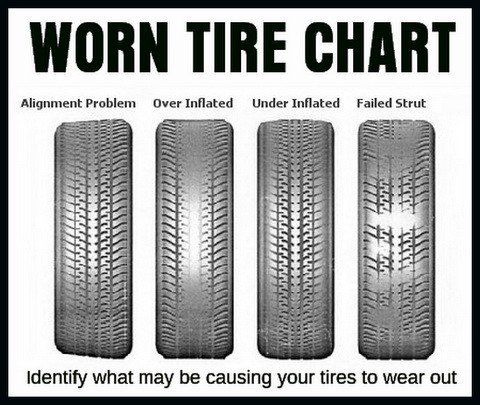
Visual inspection is sufficient to check tire wear. It is important that tire wear (if any) is uniform over the entire circumference of the wheel. Uneven tire wear can be a sign of wheel imbalance, and it also indicates a possible sloppy driving style of the previous owner, which can cause several more problems when operating a car. Increased wear on the outside indicates insufficient tire pressure, which should also be checked before a test drive. The operation of such wheels is fraught with the fact that in corners the rubber will not “hold” the road well. If the center part was more subject to wear, get ready for a decrease in acceleration, handling and braking.
When buying a car, be sure to pay attention to this parameter. Tests show that the permissible tread depth should be at least half of the original - for summer tires it is at least 3 mm (1.6 mm by law, but it would be better to leave a margin), for winter tires - at least 4 mm. It is not difficult to check the depth - in car dealerships you can buy a special probe with marks or use a simple ruler.
It is not difficult to check the depth - in car dealerships you can buy a special probe with marks or use a simple ruler.
When inspecting the tread, it is not superfluous to check for signs of repair from the inside (on a smooth surface). By themselves, the patches on the tread are not critical, but only if their number does not exceed a couple of pieces per wheel, and their size is a third of the width of the pattern. Otherwise, the operation of the "horse" on such wheels should be abandoned. Pay attention to the nature of the patch - the restored tread pattern (the so-called "grooving") can result in a tire rupture.
The tire grips the road surface across the entire tread width. The edges of the tire also have an impact on braking performance. The smaller they become, the less grip the rubber has on the road surface, and therefore the risk of driving on wet or slippery surfaces increases. A worn leading edge indicates problems with the car's suspension, which is also worth paying attention to. You can check this part of the tread "by touch" - the problem is present if the teeth on the tread edges differ in sharpness.
You can check this part of the tread "by touch" - the problem is present if the teeth on the tread edges differ in sharpness.
Tire micro cracks can occur even under conditions of minimal rubber wear and careful storage. The average service life of rubber is 5 years, but, as a rule, by the end of the term, the tire naturally becomes unusable. In the presence of small cracks, it is not recommended to exceed the speed of more than 80 kilometers per hour, otherwise the chances of complete tire wear increase rapidly. Deep cracks appear with a large degree of delamination of the tire. The use of such rubber is highly discouraged.
Defects in the form of cuts and repair marks are a clear signal to stay away from the selected used rubber. As a rule, tire side cuts are dangerous due to the fact that the repair of such defects is extremely difficult and not gives a further guarantee of the quality of rubber operation.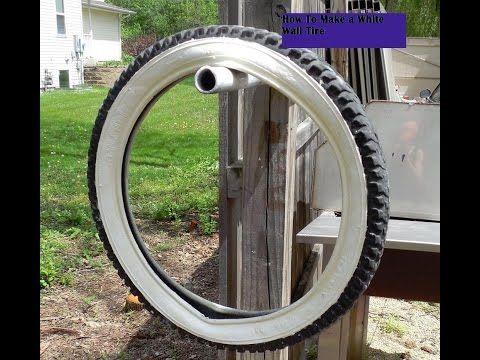 But, in addition, it is necessary to check and make sure that there are no hidden damages. Deformation of the tire carcass in the form of dents and creases can be the result of driving or parking on a flat tire, as well as a strong impact. The end of the service life in this case may come earlier than expected.
But, in addition, it is necessary to check and make sure that there are no hidden damages. Deformation of the tire carcass in the form of dents and creases can be the result of driving or parking on a flat tire, as well as a strong impact. The end of the service life in this case may come earlier than expected.
The internal delamination of the tire is extremely difficult to detect. A warning can be various types of swelling on the inside of the tire. Visible breaks in the layer are also possible. Check the degree of puncture of the tire - when pressed with two thumbs, the tire should not deform much, but will quickly return to its original shape.
These tire and wheel test parameters apply to both summer and winter tires. But, in the cold season, when the car is “reshod” in winter tires, some other factors should be taken into account.
In winter, buying a car with winter tires is considered correct, but another situation is possible, so do not neglect to inspect the wheels.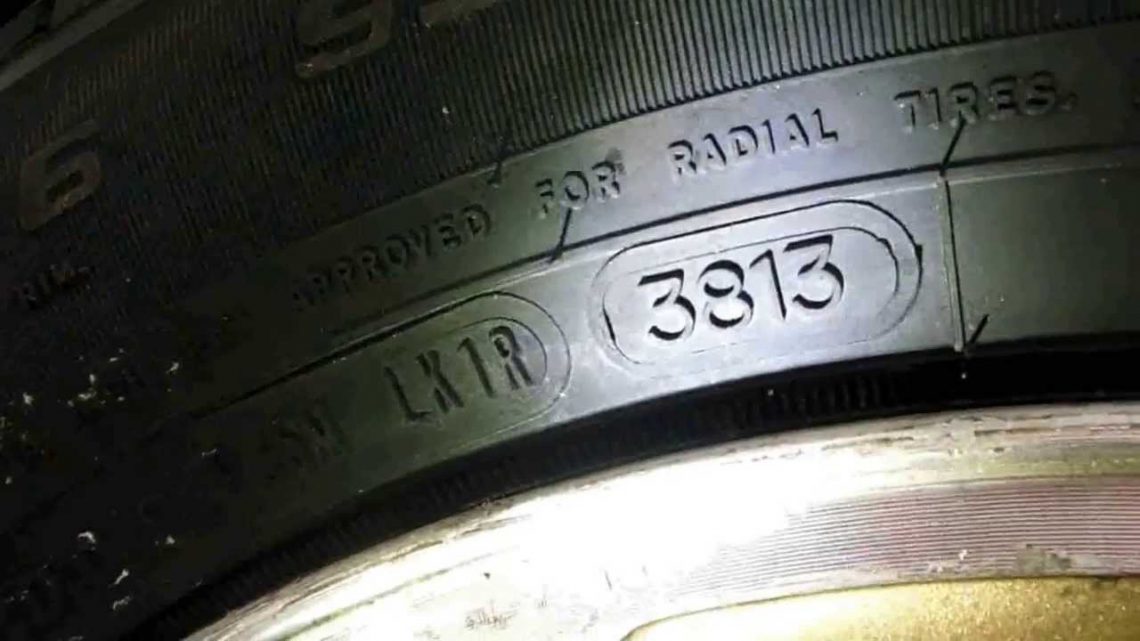 First of all, you should check what the car is “shod” in - it can be idle for a long time, especially if the transaction takes place in the car market. Winter wheels are divided into two types: studded and friction.
First of all, you should check what the car is “shod” in - it can be idle for a long time, especially if the transaction takes place in the car market. Winter wheels are divided into two types: studded and friction.
Equally important is the tread depth. For 100%, it is customary to take the tread depth of new tires, 0% - unusable, respectively. The minimum permitted tread depth for winter tires is 4 mm, otherwise 0%. From the factory, tires are produced with different depths. Keep in mind that if the initial depth reached 8 mm, then 4 mm is not 50% wear, as some sellers say.
A buyer's vigilance will be a guarantee of a good deal. Bad tires in the general good condition of the car is not always a reason to refuse a purchase. If the wear is natural and even, and also corresponds to the average life of tires, the option of purchasing a car is worth considering. You can always eventually replace the rubber with one that will inspire confidence.
In order to avoid doubts about the history of the purchased car during the inspection, check the history of the car using the Autocode online service. To obtain a complete report, only the VIN, chassis number or state number of the vehicle of interest is required.
By driving in unique car numbers, you will receive the following data:

If you are a professional car dealer, you can also use the Autocode Profi service of unlimited car checks. Autocode Profi allows you to quickly check a large number of cars, add comments to reports, create your own lists of liquid vehicles, quickly compare options and store vehicle data in an orderly manner.
Tire wear or other negative factors may be hidden by the seller. So that they do not subsequently lead to problems in other parts of the machine, order an on-site Autocode check. The specialist will arrive at the place at any time and conduct a professional inspection of the vehicle. Checking the machine through Autocode will help to verify the correctness of your assumptions or refute them.
If there are no serious problems in the history and technical part of the car and you decide to buy, take the final step - enter the seller's passport data through the car owner verification service. This service will show whether he has problems with the law, whether his passport is valid, whether there are debts and enforcement proceedings.